Nargis fainted three times while she could not find her mother in the derbies of nine storied building. It’s been a day and a night she is frantically checking around hospital, in each corner of destructed building and hundreds smashed dead bodies. But where is Nargis mother’s existence? Hundreds of weeping mother, father, sister, brother, husband, wife and children were like mad for searching their beloved faces. The population who are the backbone of the family, of the country their bones cracked under wretched concrete. Knowing still hundreds people are breathing inside the dreadful collapsed building helpless thousands mass people came out with their humanity. Rescuing living being or carrying out dead bodies but nothing evaporates tears of people who experienced such frightening circumstances. The deadly trap eat out lives of thousands workers who never might thought of loosing life as prey of capitalism greed. Many workers leave their breathe waiting to hear a call of rescuer. Many female worker’s hand or leg trapped under stone while they are still alive and asking rescuer to cut their hand and take off. What to do and how to do? The traumatized nation has no word in mind to speak. Sharif after finding cracked half body parts of his 21 years younger brother screamed “My brother never do any harm to any body. Why Allah punishes him, why? Because we are poor, we are useless to Allah, we are useless to riches, and because we are bloody workers”.
Some 3,500 people were in the Rana Plaza building in Savar, some 30km (20 miles) outside Dhaka, when it collapsed suddenly on Wednesday morning 24th April. The first three floors of the building, located in the Dhaka suburb of Savar, contained around 300 shops. At least four garment factories — New Wave Bottoms, Phantom Apparels, Phantom Tack and Ethar Textile — occupied higher levels, employing around 3,500 people. Building showed cracks on Tuesday, but all garments workers forced to go to work on Wednesday threatening to cut off salaries. & the devastating accident happened
Local hospitals were overwhelmed with the arrival of more than 2,000 injured Textile workers. Victims were still calling for help from among the piles of shattered concrete slabs, according to rescue workers and volunteers, as hope began to fade for hundreds still trapped. And the death toll had reached 400. After putting the conclusion that no more workers can be alive rescuer workers are now using heavy equipment to clear the site and officials expect the number of casualties to rise as hundreds of people remain missing.
Around 4 million people are employed in Bangladesh’s 4,500 textile factories. The industry generates 80% of the country’s $24 billion annual exports — making Bangladesh the world’s second largest clothing exporter after China — yet wages remain as low as $37 per month for workers spending 15-hour shifts in sweatshop conditions.
“What to describe and what to write! All I could see were dead bodies all surround me. A silent anger, unbearable pain and helplessness had frozen my finger to click. Besets dead bodies and their each drop of blood asking me to tape their vulnerable death memoir to show the people around the world, how painfully they left the world. And I can not rest until I can spread their pains of deaths. Shouts slaughtered under concrete. How many times we will remain mute and hollow out graves! Why world’s most innocent souls has to be always trapped as vulnerable victims! Their souls will never rest in peace until we know how dreadfully they died without telling their last wish”
– GMB Akash

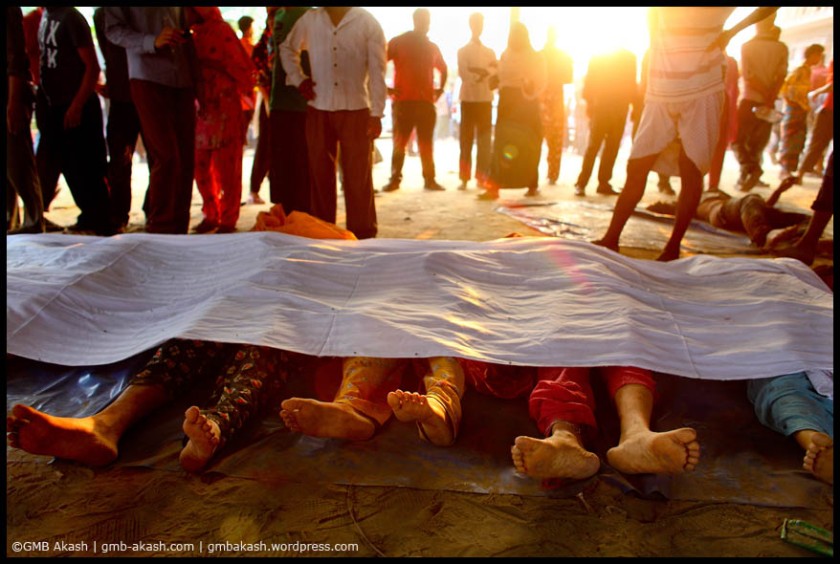

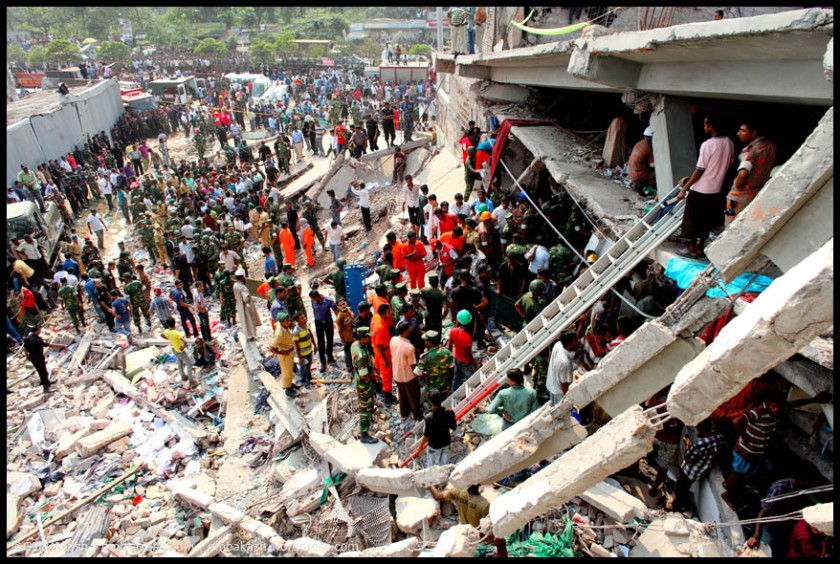

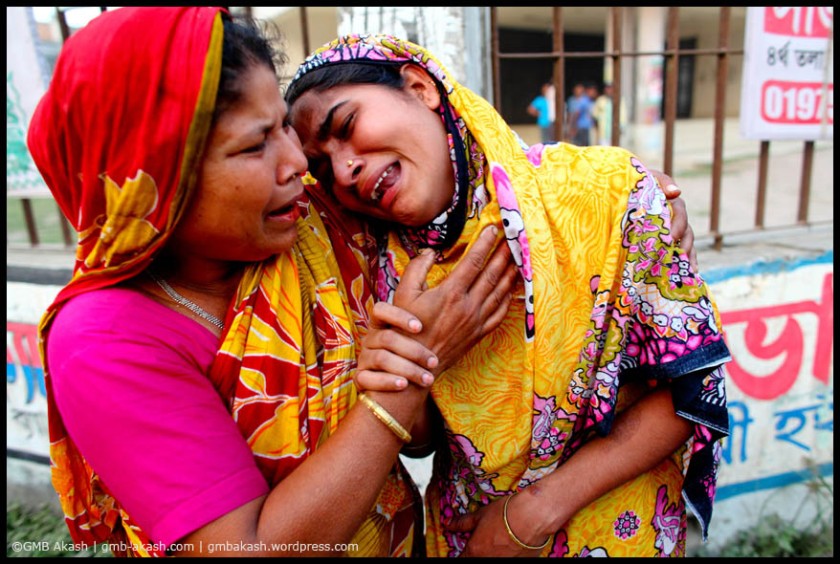
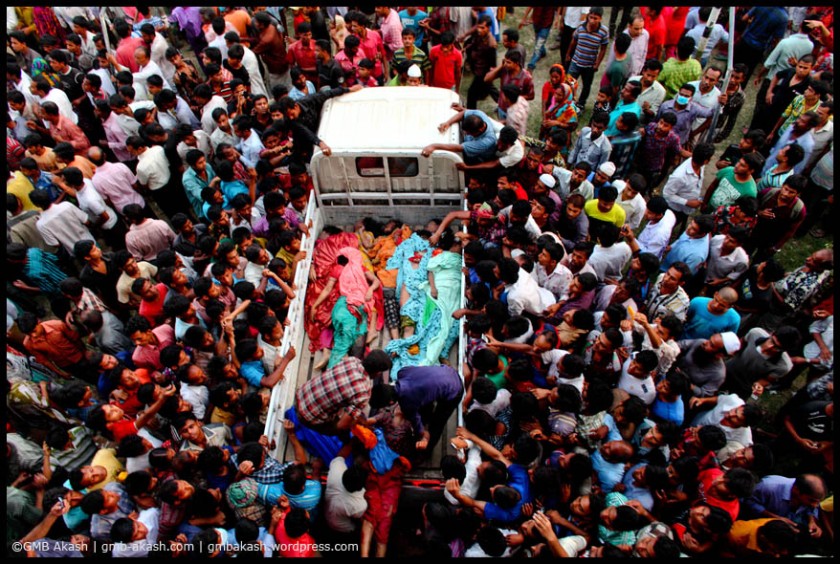
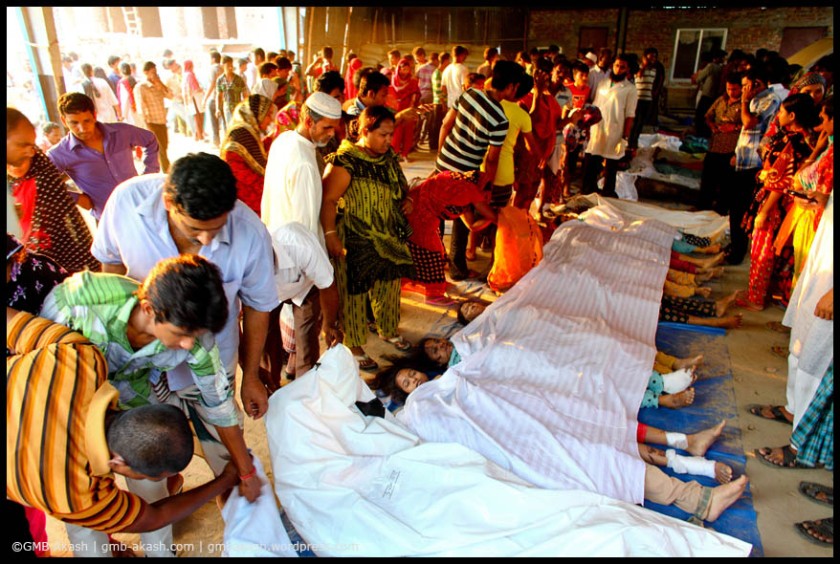
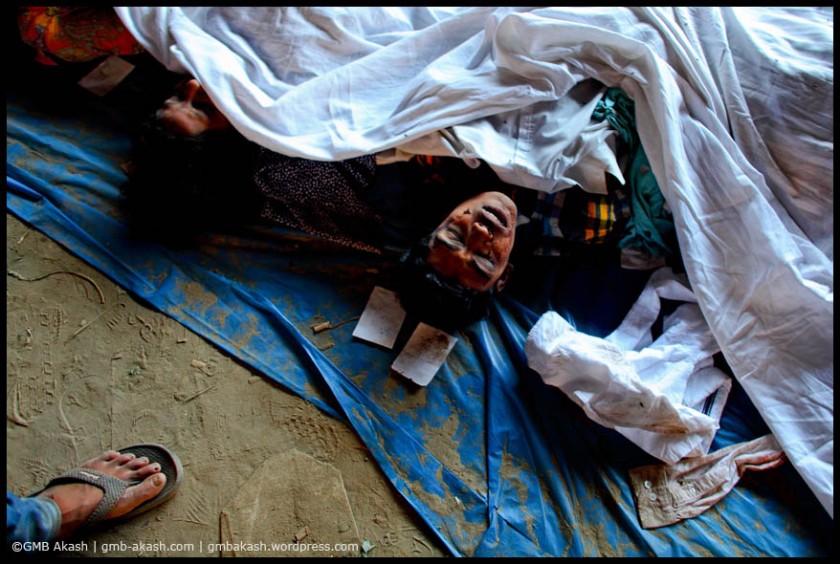
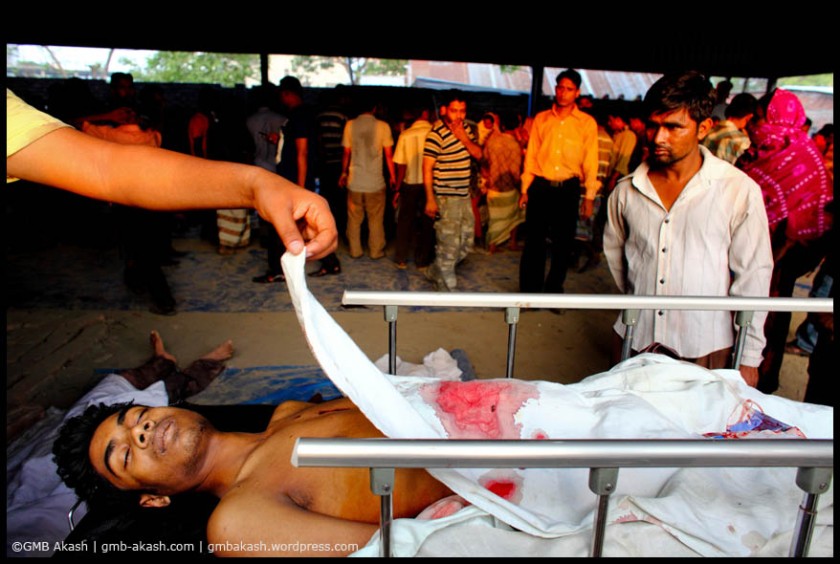
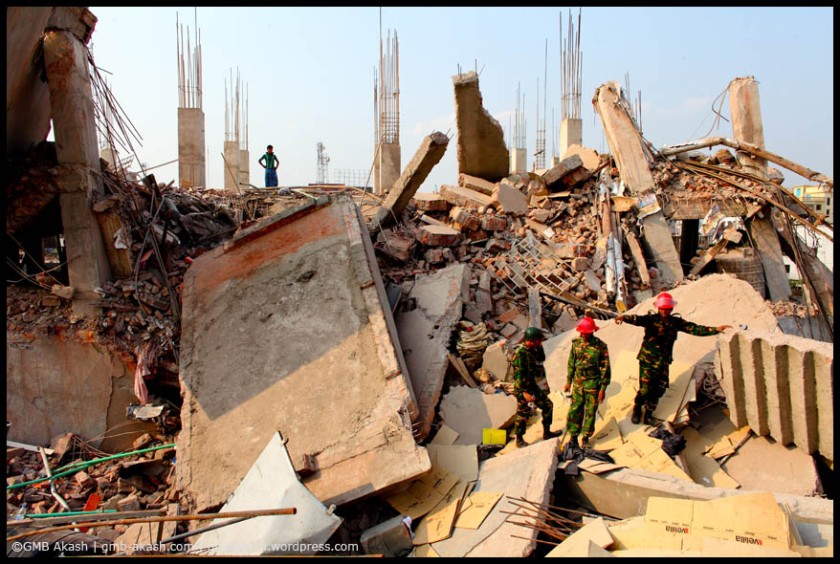
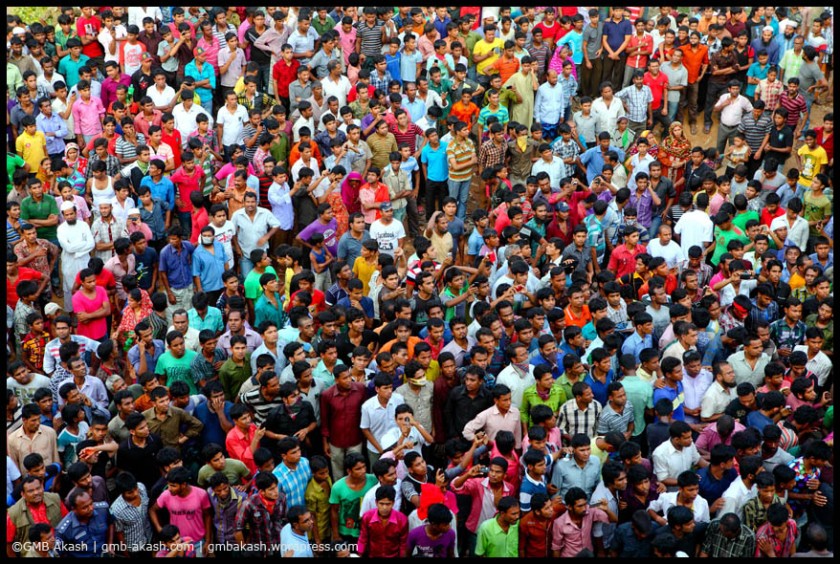

I have been listening to the tragic stories of these workers and the collapse of buildings in Bangladesh. NPR, a National Public Radio Station in the U.S. did an expose and discussed some of the main offenders, Walmart, Gap and H & M, who have their clothes made in these factories and have made no effort to repair the buildings in Dhaka. Your incredible photojournal work here brings this deeply sad news and the inhumane conditions of these factories to a very visceral and intimate level. I am very moved by the work you do. Thank you.
LikeLike
This is heart wrenching. Your photography is incredibly powerful – probably too much so for some, especially those in power, and your words eat at the heart. This is not easy to read or look at but we should and must.
LikeLike
This is really a tragic story ! You have captured the story very powerfully !
LikeLike
This story tears me to pieces. I have been following it on the news. I’m so glad you posted about it here. The world needs to know… The anger I feel and the sorrow and the helplessness… Your images say it all. And $37 a month? For 15-hour shifts in sweatshop conditions? I am sick…
LikeLike
It’s always very sad when we see and ear this kind of news … Hoping you are well and that would show the world through your objective, sad but beautiful images from the artistic point of view.
The photos speak for themselves. I very much regret the sad event in your country.
Congratulations for the excellent work!
LikeLike
speechless
LikeLike
Heart wrenching images. A terrible situation nicely captured.
LikeLike
The atrocities leave one speechless and any words would be meaningless, while the pictures are so powerful. Well done. Things need to change for the poor and this is a great contribution form AKASH. Thanks
LikeLike
and all so the west can have cheap disposable clothes. Have we become so inhumane that our brother’s and sister’s lives are cheap and disposable too?
LikeLike
Great photos! but lets not be selfish when we buy our clothes, looking at the cheap price instead of thinking where and who makes them so that they can cost so little.Why are we not aware of the people that work in those factories, treated like slaves for few dollars a month.
Everyone of us can do something to try to change the sort of those poor people.
Akash, you are great! keep on informing the world with your photos of all the unjustess around.
LikeLike
moving story through pictures … I have tried to say something once or twice about the article but discarded my message. I still don’t have anything to add here , except keep up the good work !
LikeLike